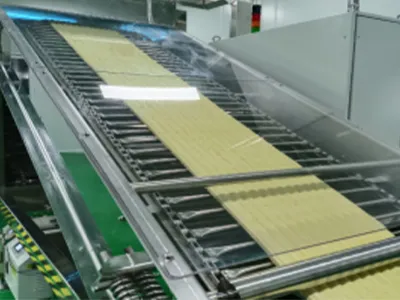Handmade Noodles Crafted with Care and Authentic Flavor
The Art of Hand-Dragged Noodles
In the vast realm of culinary delights, few dishes hold as much charm and cultural significance as hand-dragged noodles. This age-old method of noodle-making is not just about food; it's a celebration of tradition, skill, and artistry that has been passed down through generations. Hand-dragged noodles, known as “la mian” in Mandarin, has its origins in China, where it embodies the rich tapestry of the country's food culture.
The Art of Hand-Dragged Noodles
What makes hand-dragged noodles particularly fascinating is their versatility. They can be served in a myriad of ways, whether in a steaming bowl of rich broth, stir-fried with vegetables and meats, or even cold with a drizzle of spicy sauce. Each preparation showcases the noodles’ ability to absorb flavors, holding onto the taste of broth or sauce, ensuring that each bite is delightful and satisfying. The art of hand-dragging noodles also varies regionally, with different provinces in China boasting their unique styles and accompanying dishes. For instance, the Lanzhou ramen, characterized by its signature beef broth and fresh cilantro, comes from the northwestern province of Gansu, while the spicy stir-fried variations hail from the Sichuan region.
hand dragged noodles

The experience of enjoying hand-dragged noodles extends beyond the palate. In many parts of China, the act of noodle-making unfolds as a communal activity, bringing friends and families together in a shared culinary journey. Watching a skilled chef deftly pull and stretch the dough is an art form in itself, often accompanied by the rhythmic sound of the dough being slapped against the work surface. It's a mesmerizing performance that draws the eyes and captivates the senses, adding an extra layer of enjoyment to the meal.
However, as the world becomes increasingly fast-paced, traditional methods like hand-dragging noodles face challenges from modern food production techniques. The allure of convenience often overshadows the beauty of handcrafted food. Yet, in many cities, a resurgence of interest in traditional culinary practices has sparked a renewed appreciation for hand-dragged noodles. Food enthusiasts and culturally curious individuals seek out restaurants specializing in this time-honored technique, eager to experience the authentic flavors that only handmade noodles can deliver.
In recent years, culinary schools and workshops have emerged, teaching aspiring chefs the delicate balance of skills needed to perfect the art of hand-dragging noodles. These sessions are often filled with laughter and experimentation, highlighting the importance of preserving cultural heritage through food while encouraging innovation within traditional frameworks.
In conclusion, hand-dragged noodles are much more than a dish; they represent a meaningful connection to culture, tradition, and craftsmanship. As people worldwide increasingly embrace the stories behind their food, hand-dragged noodles stand as a testament to the beauty of culinary artistry. Whether enjoyed in a bustling noodle shop or at a family gathering, they continue to unite people through their captivating flavors and the age-old techniques that bring them to life. So, the next time you savor a bowl of hand-dragged noodles, take a moment to appreciate the hands that crafted them and the cultural heritage they embody.
-
Unleash Your Inner Chef with Delectable Italian Pasta CreationsNewsAug.01,2025
-
Savor Health and Flavor: Irresistible Soba Noodles for Sale Await!NewsAug.01,2025
-
Nourish Your Body with Premium Organic Ramen - A Culinary Delight AwaitsNewsAug.01,2025
-
Elevate Your Dishes with Our Exquisite Kinds of Egg NoodlesNewsAug.01,2025
-
Dive into Flavorful Convenience with Our Ramen OfferingsNewsAug.01,2025
-
Discover Exquisite Types of Naengmyeon and Chilled Soba NoodlesNewsAug.01,2025
-
Is Whole Wheat Pasta Healthy?NewsMay.30,2025
Browse qua the following product new the we

















































































































